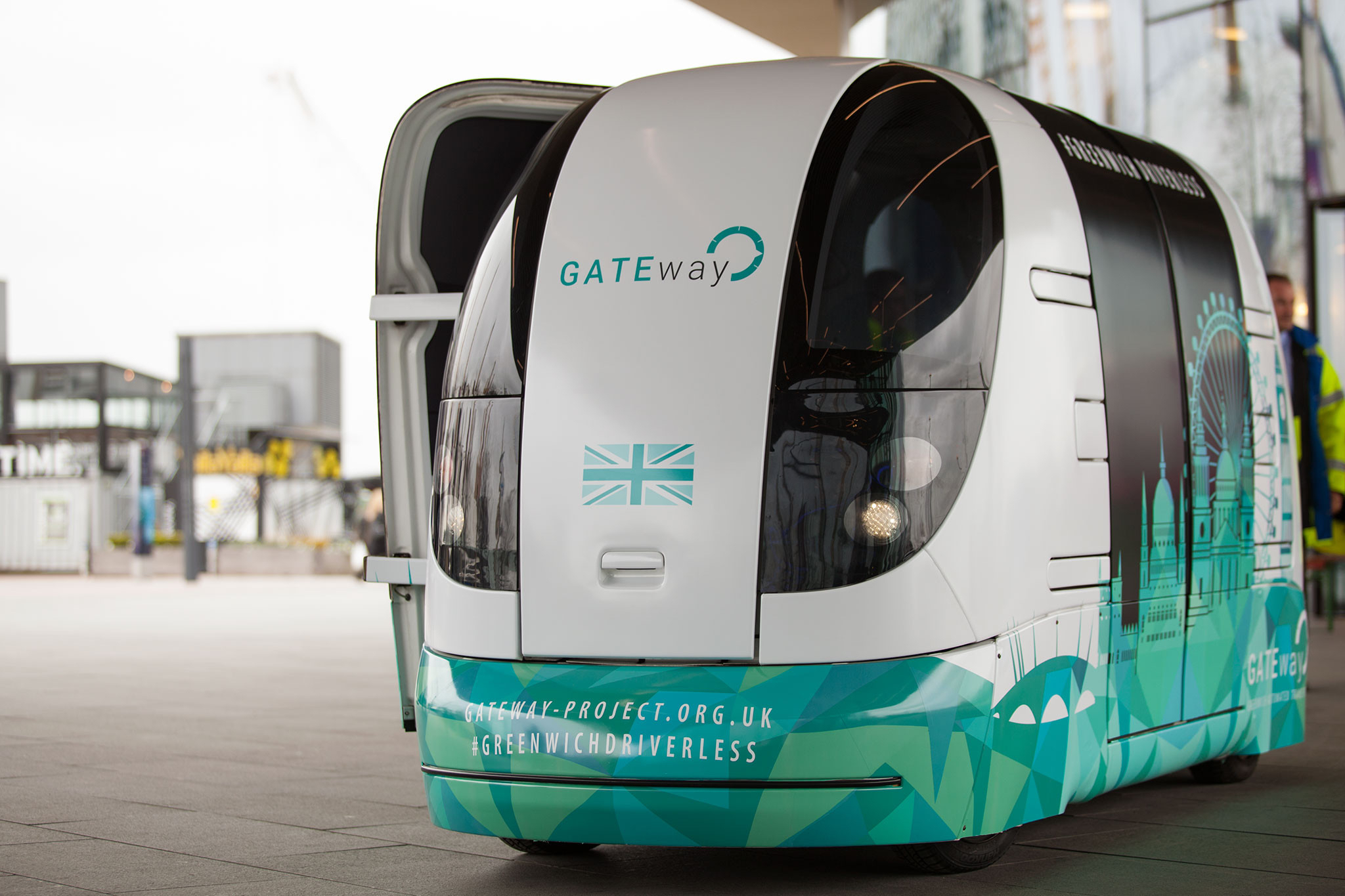.

Developed through the so-called GATEway Project (Greenwich Automated Transport Environment), the vehicles will use advanced sensors and autonomy software to detect and avoid obstacles whilst carrying members of the public participating in the study.
The initiative, which is led by TRL and funded by government and industry, aims to demonstrate the use of automated vehicles for ‘last mile’ mobility, seamlessly connecting existing transport hubs with residential and commercial areas using a zero emission, low noise transport system.
Research findings from the project will guide the wider roll out of automated vehicle technology in all forms of surface transport, including cars, lorries and buses.
The main focus of the study is not the technology but how it functions alongside people in a natural environment.
This first trial will explore people’s pre-conceptions of driverless vehicles and barriers to acceptance through detailed interviews with participants before and after they ride in the shuttle.
Those behind the initiative claims that it will help the UK emerge as a world leader in automated technology and provide valuable sociological insight into what is expected to be the most profound change in mobility since the invention of the internal combustion engine.
Developed by British companies Westfield Sportscars, Heathrow Enterprises and Oxbotica, the shuttle (named ‘Harry’ (in honour of navigation visionary John Harrison)), has no steering wheel or typical driver controls.
To navigate the complex and unpredictable real-world environment, it will use Oxbotica’s Selenium autonomy software and a host of onboard sensors (including cameras and laser) to locate itself on its map, perceive and track dynamic obstacles around it, and plan a safe obstacle-free trajectory to the goal. It will do all of this without any reliance on GPS.
Whilst the GATEway vehicle is designed to operate without a human driver, a safety steward will remain on-board at all times, complying with the UK’s code of practice on automated vehicle testing.
Prof. Nick Reed, academy director at TRL commented: “This research is another milestone in the UK’s journey towards driverless vehicles and a vital step towards delivering safer, cleaner and more effective transport in our cities.
“It is critical that the public are fully involved as these technologies become a reality. The GATEway Project is enabling us to discover how potential users of automated vehicles respond to them so that the anticipated benefits to mobility can be maximised.”
The shuttle trial is one of many taking place as part of the GATEway Project to help understand the use, perception and acceptance of automated vehicles in the UK.
Others trials include automated urban deliveries, remote teleoperation demonstrations, exploring how automated vehicle systems work for people with additional travel needs, and high-fidelity simulator tests to investigate how drivers of regular vehicles respond and adapt their behaviour to the presence of automated vehicles on the roads.




Poll: Should the UK’s railways be renationalised?
I _do_ remember British Rail - and that it was <i>literally</i> a national joke https://youtu.be/zV2lmSDKvO8